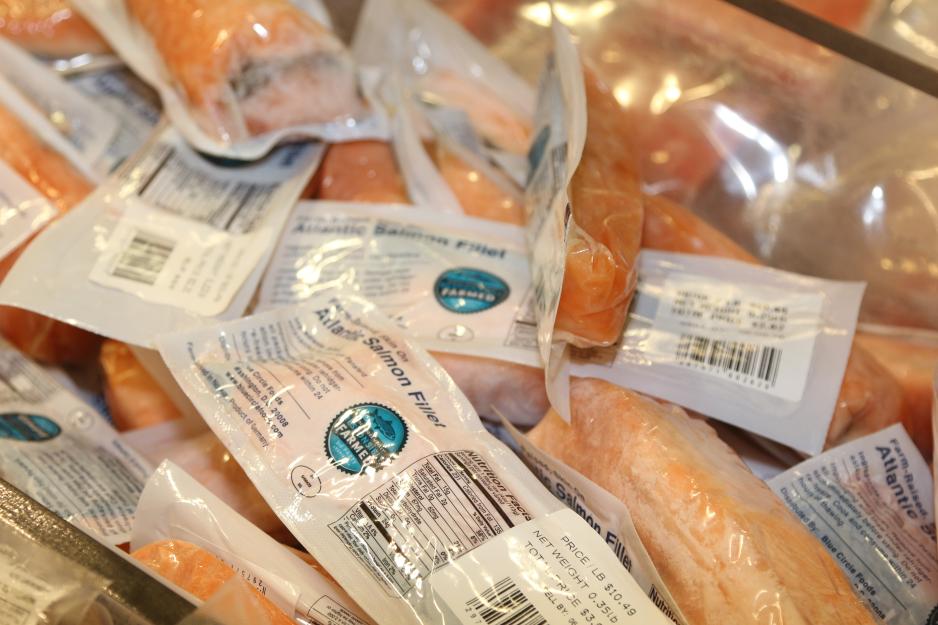Arne O. Holm says Light a Candle for the Salmon

You might not get sick from eating sick fish, but you do get quite unwell from what the farming industry serves from so-called "discrepancies." (Archive photo: High North News)
Commentary: On the surface, it looks like a complete PR collapse. Below the surface of the sea, something far more serious is at stake. The salmon industry is at risk of making itself inedible.
Many were surprised that farmed salmon lives a brutal and deadly life. That is because the salmon industry, led by the interest organization Norwegian Seafood Federation, has largely succeeded with its PR strategy aimed at us consumers.
That era is over as Norwegian and international media have documented what they believe to be dead (not by slaughter) and sick fish heading for the market as a prime commodity. A simple overstep in itself but a door opener into a fish welfare worthy of criticism.
A horror scenario
While the images of dead fish fill our TV screens, the Icelandic pop queen Björk has launched a frontal attack on the industry. Thousands of farmed salmon infested with lice have escaped and found their way to rivers where the Icelandic wild salmon live.
It is a horror scenario that has led to Icelandic restaurants refusing to sell farmed salmon produced by Norwegian owners while the people take to the streets to protest.
In Chile, another "fish farming paradise," the newspapers are filled with a mysterious farmed salmon mass death.
Refusing to sell farmed salmon.
In Norway, where local communities flourish beneath the farming industry's wings, the Norwegian Seafood Federation seriously attempted to make it a winning case that it is not dangerous to eat sick fish. Instead, the interest organization clung to its outdated, pompous, and, above all, incorrect slogans about the salmons' excellent lives in the cages.
This is about an industry that has pumped out panegyric descriptions contrary to the documentation from researchers, veterinarians, and the Norwegian Food Safety Authority.
"For the health of the people and the planet; We are creating the future; We are feeding the future" are recurring slogans, always combined with sustainability. Nothing, if we are to believe the slogans, is healthier, feels better, tastes better, and is more sustainable than farmed salmon.
In all seriousness
In all seriousness, these are descriptions of a livestock farm where a death rate of between 15 and 20 percent is perfectly fine.
In 2022, 58 million farmed salmon died, according to the Norwegian Directorate of Fisheries. That is in addition to a cautious estimate of 50 million dead, so-called cleaning fish, fish that are let into the cages to eat lice from the salmon before they themselves die.
Some of the panegyric could be toned down.
The salmon industry is an entrepreneurial industry unleashed on politicians without knowledge about what is happening outside the Government Quarter. It is an entrepreneurial industry that suddenly earned so much money in the political free flow that money became most important. That is how the political Norway lost control and has since been unable to take it back.
The industry created a Norwegian export adventure and caused local communities to flourish. But it is also an industry that protests against the tax pressure, against regulation, and most recently, against labeling sick fish for sale in the fridge where you shop.
Because it is not dangerous to eat. That Norwegian and international consumers could be concerned with animal welfare, not just food safety, obviously shocked the PR people in the Norwegian Seafood Federation.
Regret
Afterward, they regretted their own arrogance in meeting the Norwegian Consumer Council which called for the labeling of sick fish. Now, the industry wants to do what it always does when the PR strategy fails: Put a few people around a table to find out "how we can increase information to the consumers about fish health and welfare in Norwegian aquaculture," according to Geir Ove Ystmark, Director of the Norwegian Seafood Federation.
Another and more immediate possibility, if the PR organization is concerned with spreading knowledge about animal welfare, is to tone down a bit of the panegyric and ignorance that restrains the industry's own information channels.
Talking about labeling sick fish is nevertheless a sidetrack.
It should go without saying that the food we buy was healthy before it landed on our plate.
What the shareholders are terrified of.
Could be open
The industry could speak openly about the challenges instead of talking about discrepancies. No other industry, which kills 15-20 percent of its livestock before it even goes to the slaughterhouse, would get away with such an explanation.
What is now being uncovered in the industry is not new, just better documented.
Despite unacceptable animal welfare, professional warnings, and the threat against the wild salmon, the past decade's changing fisheries ministers have insisted that this particular industry is ready for a fivefold increase in volume.
It is an ambition brought out of nothing, then turned into a political aim.
What the industry now fears, what the flourishing local communities along the coast now fear, and what the shareholders now fear is a consumer revolt.
Refusing to serve
That the consumers will join the procession of restaurants refusing to serve farmed salmon and that they will sing along when Björk takes her message worldwide.
It is a justified fear created by a communication strategy that forgot that the terms "trust" and "decency" are still part of Norwegian and international languages.
We might not become sick by eating sick fish. Yet you could get quite unwell by being served "discrepancies," for starters, main courses, and desserts.



